Goat Milk vs Sheep Milk vs Cow Milk: An In-Depth Comparison
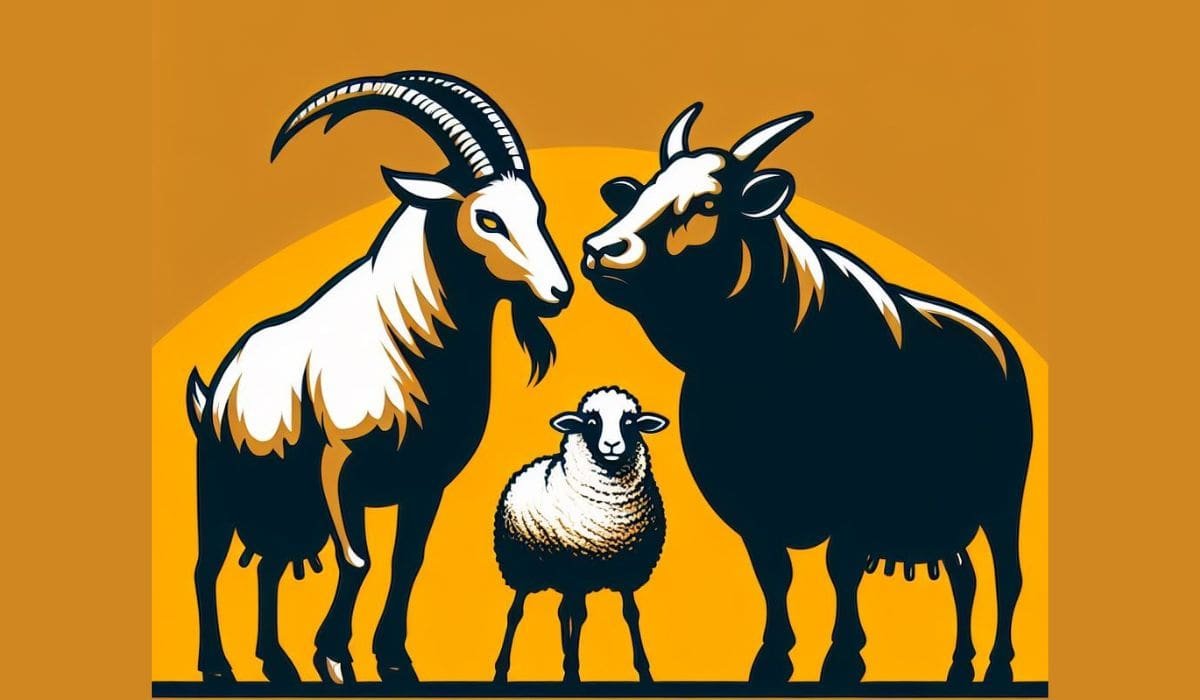
I always wondered which milk is better for consumption? Goat Milk, Sheep Milk or Cow Milk? Personally, between goat, sheep, and cow milk, I lean towards goat milk and products for its unique nutritional benefits and easier digestibility.
But am I right or am I biased?
In this Goat Milk vs Sheep Milk vs Cow Milk comparison, I will compare each milk’s nutritional content, including fat and calories, essential vitamins and minerals, and the protein in all three of them as well as their culinary uses and impacts on digestion and health.
All backed by research. Throughout the article you will find links to scientific papers and research that fact check my writings. I urge you to follow them.
Nutrition Profile
The first thing that came to my mind was to see how each milk’s nutrition profile compare to each other. That’s why I went over to USDA’s website and added their nutritional data in this comparison table.
The data for each milk can be seen here:
- Goat’s milk, whole, with added vitamin D.
- Sheep’s milk, fluid
- Cow’s Milk, whole (3.5% or 3.8% fat milk) with added Vitamin D.
Here’s a simplified table comparing the nutrition values of Goat Milk, Sheep Milk, and Cow Milk. The values presented are for 100 grams of each type of milk.
Note: “-” means that the data is not available or not applicable.
| Nutrient | Goat Milk | Sheep Milk | Cow Milk |
|---|---|---|---|
| Energy (kcal) | 69 | 108 | 60 |
| Protein (g) | 3.56 | 5.98 | 3.28 |
| Total Lipid (g) | 4.14 | 7 | 3.2 |
| Carbohydrate (g) | 4.45 | 5.36 | 4.67 |
| Calcium (mg) | 134 | 193 | 123 |
| Iron (mg) | 0.05 | 0.1 | 0 |
| Magnesium (mg) | 14 | 18 | 12 |
| Phosphorus (mg) | 111 | 158 | 101 |
| Potassium (mg) | 204 | 137 | 150 |
| Sodium (mg) | 50 | 44 | 38 |
| Zinc (mg) | 0.3 | 0.54 | 0.41 |
| Copper (mg) | 0.046 | 0.046 | 0.001 |
| Selenium (µg) | 1.4 | 1.7 | 1.9 |
| Vitamin C (mg) | 1.3 | 4.2 | 0 |
| Thiamin (mg) | 0.048 | 0.065 | 0.056 |
| Riboflavin (mg) | 0.138 | 0.355 | 0.138 |
| Niacin (mg) | 0.277 | 0.417 | 0.105 |
| Vitamin B-6 (mg) | 0.046 | 0.06 | 0.061 |
| Folate (µg) | 1 | 7 | 0 |
| Vitamin B-12 (µg) | 0.07 | 0.71 | 0.54 |
| Vitamin A, RAE (µg) | 57 | 44 | 32 |
| Cholesterol (mg) | 11 | 27 | 12 |
| Vitamin D (D2 + D3) (µg) | 1.3 | – | 1.1 |
| Vitamin K (phylloquinone) (µg) | 0.3 | – | 0.3 |
Observations
- It seems that goat milk has less fat and calories compared to sheep milk, but both have more protein than cow milk.
- Sheep milk packs a punch with higher energy, protein, and fat content.
- When it comes to vitamins and minerals, all three milks have their strengths. Goat milk is tops in vitamin C, while sheep milk leads in vitamin B-12 and vitamin A.
- If you’re watching cholesterol, goat milk is the winner, followed by cow and sheep milk.
Digestibility

Goat milk and sheep milk is often easier to digest rather than Cow’s milk. Let me explain why.
First of all, it is important to emphasize that most people around the world are Lactose intolerant – according to research data. For example:
- Lactose intolerance has a high prevalence worldwide, ranging between 57% and 65%. [1]
- About 70% of the adult world population is lactose-intolerant. [2]
- Lactose intolerance is a condition suffered by an estimated 50 million Americans, and certain ethnic and racial populations are more widely affected than others. [3]
- Genetic evidence indicates that lactose intolerance arose over 5,000 years ago and spread among populations due to positive selection. [4]
Lactose intolerance is a condition where the body is unable to fully digest lactose, which is a sugar found in milk and dairy products.
This is due to a deficiency of the enzyme lactase, which is responsible for breaking down lactose. As a result, individuals with lactose intolerance may experience symptoms such as bloating, gas, and diarrhea when they consume milk or dairy products.
Cow’s milk generally has a higher lactose content compared to goat and sheep milk. This make’s it harder to digest.
Also, both goat and sheep milks can be broken down and absorbed by the body more easily compared to cow’s milk, because they have a different composition and structure compared to cow’s milk. [5]
They contain smaller fat globules – which can be more easily digested by the body – and a higher proportion of medium-chain fatty acids, which are known to have various health benefits.
KEY TAKEAWAY
In terms of digestibility, goat and sheep milks are better than cow’s milk.
Allergic Reactions and Sensitivities
When it comes to milk allergies, it’s essential to understand that the proteins found in goat, sheep, and cow milk can trigger reactions in some individuals.
Milk, in general, contains several proteins that can act as allergens, with beta lactoglobulin, casein, alpha lactoalbumin, and seroalbumin being the main allergens. [6]
It is also worth mentioning that cow milk allergy is very common in early childhood – although most kids develop tolerance by the age of 3. [7] [8]
Research indicates that goat milk contains A2 beta-casein, which is considered less allergenic than the A1 beta-casein found in most cow milk. [9]
Sheep milk, while richer in immunoglobulins, may also be less allergenic, though studies are less conclusive.
KEY TAKEAWAY
Cow’s milk is more prone in causing allergies than goat or sheep milk?
Flavor
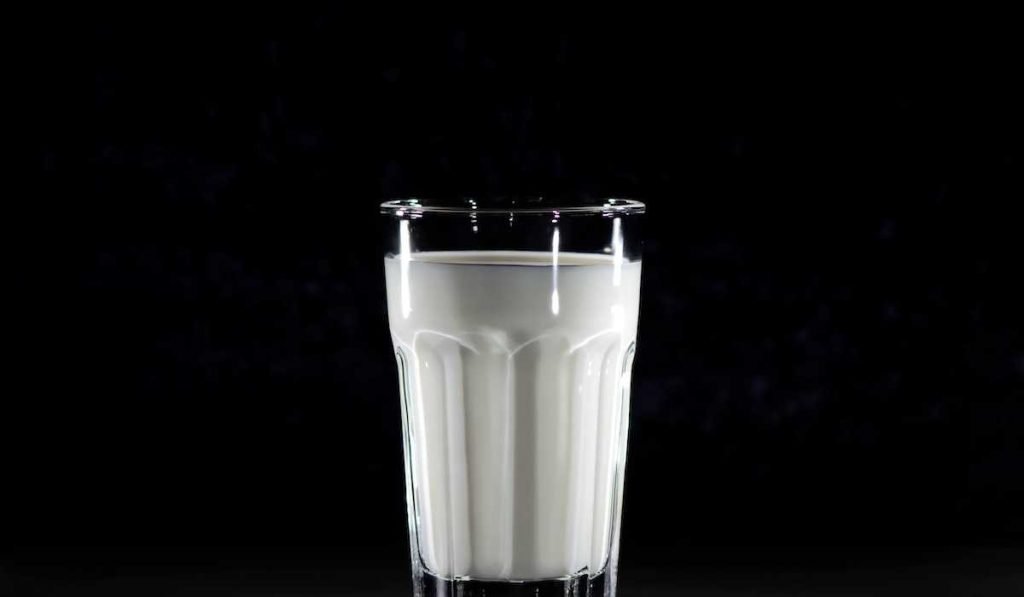
When it come’s to flavor, I think we all agree that goat and sheep milk carry a more robust and tangy flavor profile compared to the mild and familiar taste of cow milk.
Although I rarely drink milk, I can say that while goat and sheep milk exude a stronger aroma, the creaminess of cow’s milk has always been my preference to be honest.
My wife still can’t stand the taste and smell of goat’s milk and although she knows that she’s gonna feel less bloated when drinking it.
Now, because we don’t like goat and sheep milk doesn’t mean that we don’t understand their health values.
This is why we made sure our daughter consumes mostly goat’s milk and yoghurt and she doesn’t complain. In fact, it seems she enjoys it.
Nonetheless, the unique aroma of goat and sheep milk can be quite appealing to those with a palate for distinct dairy flavors.
KEY TAKEAWAY
For most people – including me – cow’s milk tastes better.
Culinary Uses
Goat milk, sheep milk, and cow milk are all used differently in the kitchen due to their unique flavors and properties.
For example, goat milk is widely used to make cheeses, such as chèvre, a soft cheese with a tangy flavor.
Goat milk is also used in yogurt production, offering a slightly different taste and texture compared to cow milk yogurt.
Additionally, it can be found in a variety of desserts and is sometimes used as a substitute for cow milk for those with sensitivities.
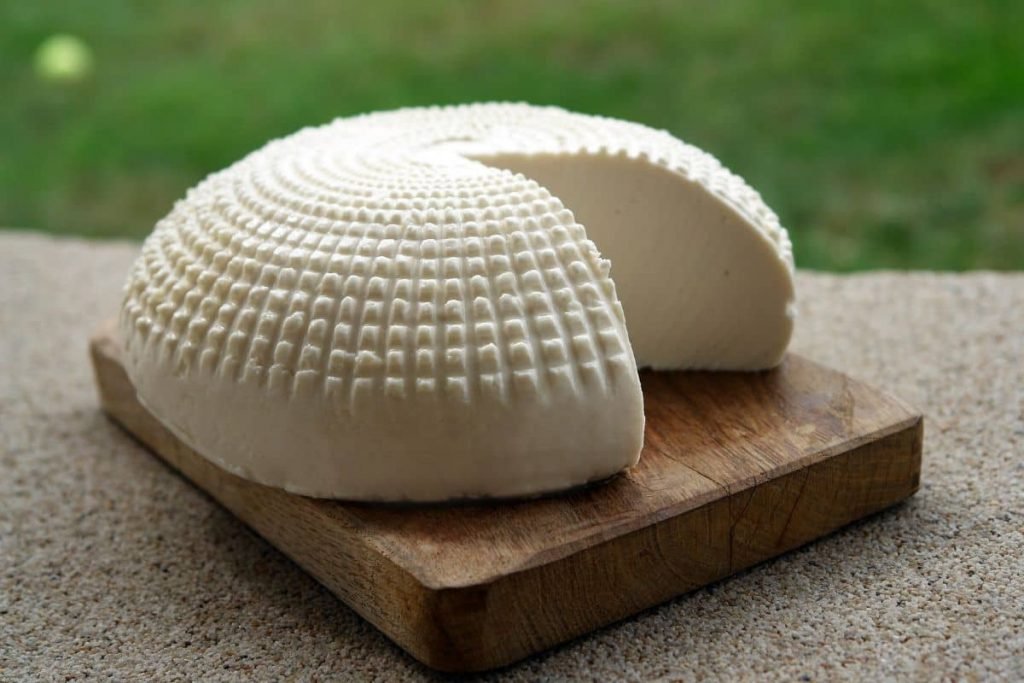
Sheep milk on the other hand, is richer in fat and protein than both cow and goat milk, which gives it a creamier texture.
It is mostly used for cheese-making and produces well-known cheeses such as Roquefort, Feta, and Pecorino.
Due to its rich fat content, sheep milk is also excellent for making ice cream, offering a luxurious mouthfeel and depth of flavor.
Finally, cow milk is the most widely consumed milk and has a vast range of uses in the culinary world. It’s the primary milk for drinking, whether whole, skimmed, or in varying fat content levels.
Cow milk is used to create a variety of cheeses, from soft Brie to hard Cheddar.
It’s also a staple in baking, providing moisture and richness to cakes, cookies, and pastries.
Cow milk is a key ingredient in sauces like béchamel and is often used in creamy soups. It is also a base for making butter and heavy cream, which are crucial in many recipes.
KEY TAKEAWAYS
Goat milk is often used for specialty cheeses and as a cow milk substitute for those with sensitivities, sheep milk is favored for creamy, rich cheeses and ice cream, and cow milk is the most versatile, used for drinking, a wide array of cheeses, baking, sauces, and creams.
Environment
If you care about the environment, you might want to consider switching from cow milk to goat or sheep milk.
Why? Because these animals are more eco-friendly than cows.
- Lower Methane Emissions: Goats and sheep produce less methane, a potent greenhouse gas, compared to cows. Methane emissions from ruminant animals contribute to climate change, and the lower emissions from goats and sheep make them more environmentally friendly. [10]
- Smaller Land and Water Footprint: Goats and sheep require less land and water resources compared to cows. Their smaller size and grazing habits allow them to thrive in diverse environments, including arid and mountainous regions, where cows may not be as sustainable. This reduced land and water footprint make goats and sheep more eco-friendly.
- Less Feed Intensive: Goats and sheep have a more varied diet and can graze on a wider range of vegetation, including weeds and shrubs. This reduces the need for intensive feed production, which often involves deforestation and the use of fertilizers and pesticides. The lower feed requirements of goats and sheep contribute to their eco-friendliness.
- Less Soil Degradation: The grazing habits of goats and sheep are less damaging to soil compared to cows. Cows’ heavier weight and grazing patterns can lead to soil compaction and erosion, while goats and sheep have a lighter impact on the land. This reduced soil degradation is another eco-friendly aspect of goats and sheep.
- Diverse Genetic Resources: Goats and sheep have a greater genetic diversity compared to cows, which can contribute to their resilience and adaptability to changing environmental conditions. This genetic diversity is important for maintaining healthy populations and conserving biodiversity
Here’s an interesting graphic I’ve found that shows the methane emissions per animal compared to a human. Although it doesn’t show a Goat’s emissions, you’ll are still able to understand how big the difference is between cow’s and other domesticated animals.
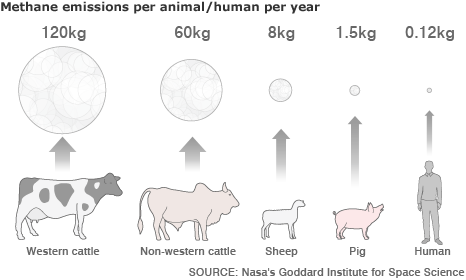
KEY TAKEAWAY
Cows cause more harm in the environment than goats and sheep.
Availability
Cow milk is the most widely available and consumed type of milk. Goat milk and sheep milk are less common but can be found in specialty stores or local farms.
But why? Well, it seems that it all comes down (mostly) to economic factors.
For example, cows are larger animals and produce more milk compared to goats and sheep. This higher milk yield makes cow milk more commercially viable and cost-effective for large-scale production and distribution.
This infographic can help you understand how vast the difference in milk production is.
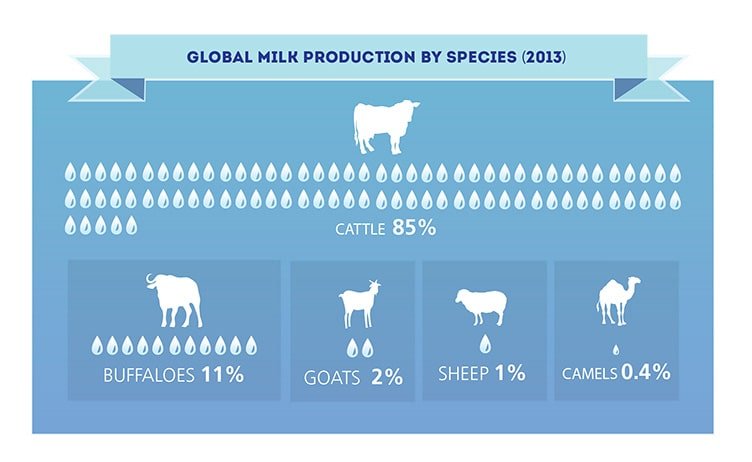
There are other reasons too.
- Cow milk has been a staple in many cultures for centuries, with a long history of domestication and widespread use in various culinary traditions.
- As mentioned earlier, cow milk has a milder flavor and smoother texture compared to goat and sheep milk.
Finally, the dairy industry has primarily focused on cow milk production, with established infrastructure, processing facilities, and distribution networks tailored to cow milk.
This infrastructure and industry support have made cow milk more accessible and readily available in various forms, such as pasteurized, homogenized, and processed dairy products.
Questions & Answers
Bottom Line
Choosing between goat, sheep, and cow milk really comes down to personal preference and specific dietary needs.
I understand that goat’s milk, with its smaller fat globules, is often easier on digestive systems and its structure is closest to human milk, which might be why some people digest it better. [12]
Milk from cows is the most accessible and familiar to most people, but as we saw earlier, it is inferior to goat or sheep’s milk in many areas.
Nevertheless, what you drink is your choice. I am just laying down the facts.
If there is anything else you want me to compare or a question about Cow, Sheep and Goat milk, leave your comment below. I’ll give you credit and I’ll update the article with your question.
More Food Comparison Guides

I like milk, cheese and yoghurt but I understand that people are cruel to the lactating mother animals and take away and kill the males. Which dairy products are usually created with the least cruelty?
Hello Joanna – thank you for your question.
Goat and sheep dairy can be slightly less harmful than cow dairy, as it’s often made on smaller farms with better animal care. However, like cows, these animals must give birth to produce milk, and male babies are usually unwanted—many are sold for meat or killed young. To reduce cruelty, choose products from small local farms, especially ones that let babies nurse longer or keep families together. Look for labels like “Animal Welfare Approved” or ask the farmer directly. For a no-harm option, plant-based alternatives like oat, almond, or cashew milk, cheese, and yogurt are worth trying.